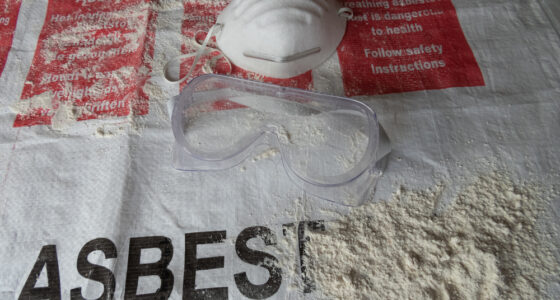Asbestos, the mineral linked to the development of mesothelioma, was used extensively in construction until the mid-1970s, when its dangers were made public. Though its use has stopped, legacy asbestos installed decades ago remains in place. A recently published South Korean study examined whether glove bags — flexible plastic enclosures with built-in gloves that create isolated work environments during asbestos removal — are effective at containing the deadly fibers.

Glove Bags Must Be Used Properly to Protect Against Mesothelioma
Glove bags are meant to allow small-scale asbestos removal jobs to be performed safely, without risking the exposure that has been linked to mesothelioma and other diseases. While traditionally used for pipe insulation removal, they are increasingly being employed for small-scale asbestos abatement jobs involving ceilings. The new study, published in the journal Scientific Reports, reports that while glove bags do offer containment benefits, improper use can expose workers and nearby individuals to dangerous asbestos levels.
Mesothelioma and other asbestos-related diseases continue to pose significant occupational health threats, making proper asbestos removal techniques essential for worker safety. The researchers measured airborne asbestos concentrations at several locations during ceiling tile removal operations and determined that in certain locations, the average concentration of asbestos fibers exceeded OSHA’s permissible exposure limit.
Multiple Failures in Glove Bag Use Led to Elevated Risk of Mesothelioma
Inhaling asbestos particles can lead to mesothelioma and other serious illnesses, so the proper use of asbestos abatement equipment is essential. In analyzing their results, the researchers identified insufficient airflow as a contributor to elevated readings, highlighting the need for improved ventilation. Elevated concentrations of asbestos in workers’ respiratory tracts were attributed to inadequate sealing between the glove bag and ceiling materials, creating gaps that allowed asbestos dust to escape. The researchers also found that the bags didn’t support work tools well, and when equipment was dropped as a result, the bags often detached from ceilings, compromising containment integrity.
Mesothelioma prevention requires adhering to safety protocols. The researchers’ conclusions emphasized essential precautions, including securing all tools to prevent dropping, using impermeable vinyl bags at least 0.15mm thick, employing strong adhesive tape, and utilizing HEPA-filtered vacuum systems. Additional recommendations included ensuring firm adhesion between bags and ceiling materials and replacing filters immediately after use to prevent cross-contamination.
If you or someone you love works with asbestos or did in the past, the risk of mesothelioma is very real. For information and support following a diagnosis, contact the Patient Advocates at Mesothelioma.net today at 1-800-692-8608.
